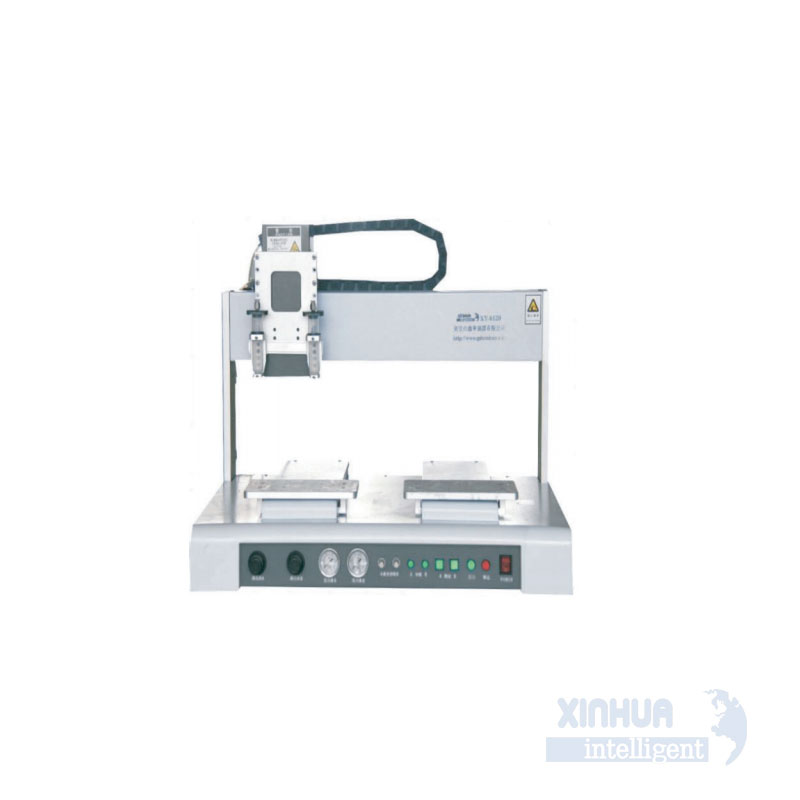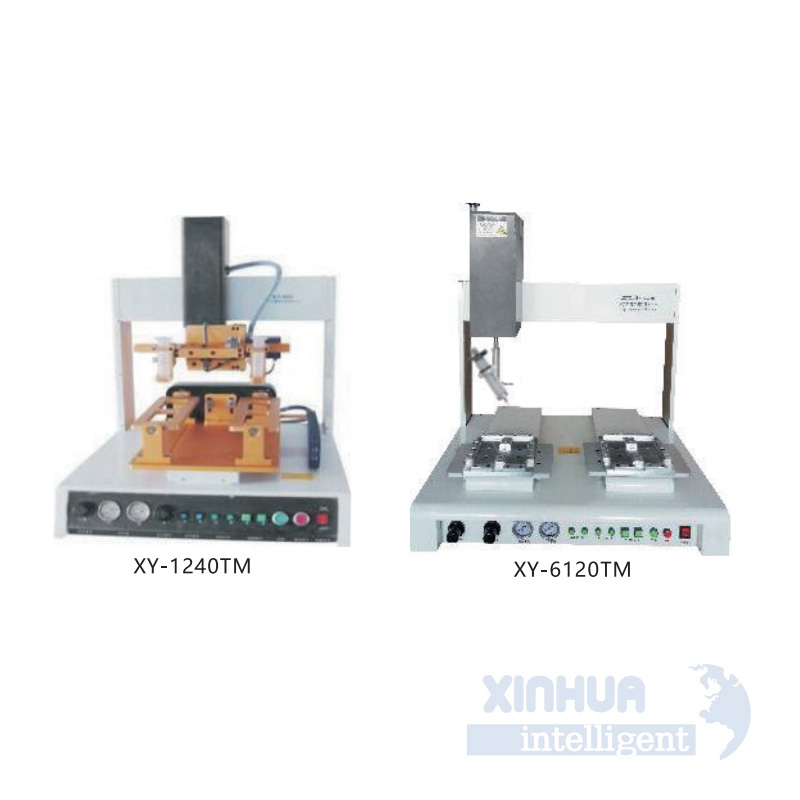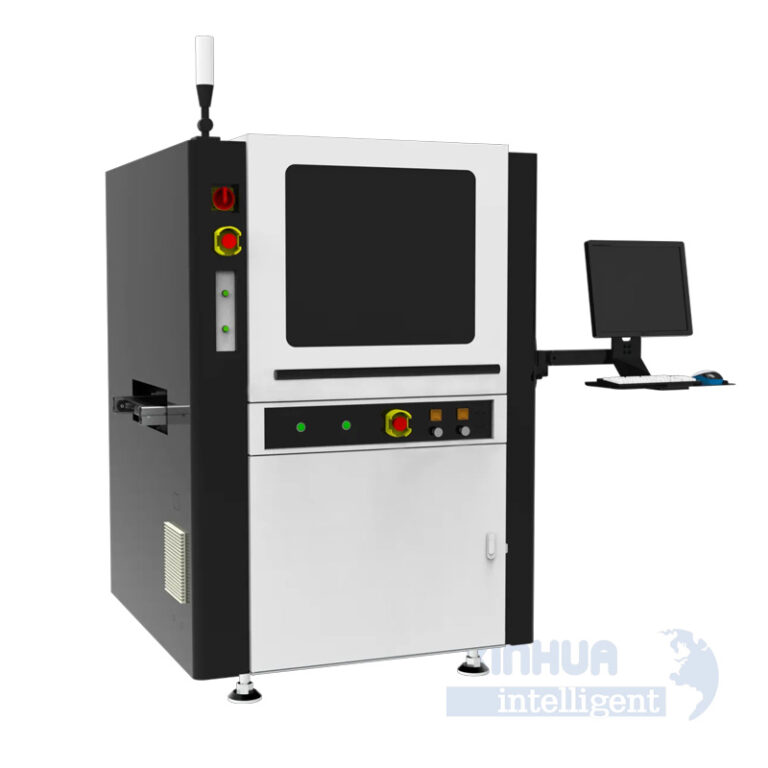
SMT Glue Dispensing Machine Factory: Revolutionizing Precision Manufacturing
The evolution of Surface Mount Technology (SMT) has transformed the electronics manufacturing industry by enabling smaller, more efficient, and highly reliable electronic devices. At the heart of this transformation lies the glue dispensing machine—a critical component in ensuring precision and quality during the assembly process. This article delves into the world of SMT glue dispensing machines, focusing on common challenges faced in their operation, practical and technical solutions to overcome these hurdles, real-world applications that highlight their versatility, and a concluding call to action emphasizing collaboration with Xinhua Intelligent, a leading innovator in this field.
1. Common Pain Points or Challenges in SMT Glue Dispensing Machines
As the demand for miniaturization and increased functionality in electronic devices grows, so do the complexities involved in their manufacturing processes. SMT glue dispensing machines play a pivotal role in securing components onto circuit boards, but they are not without their challenges. Below are some of the most common pain points encountered:
A. Precision and Consistency
Achieving precise and consistent glue deposition is one of the primary challenges. Variations in glue volume, placement accuracy, and bead width can lead to defective products. These inconsistencies often arise due to factors such as nozzle wear, incorrect pressure settings, or inadequate calibration.
B. Material Compatibility
Different adhesives have varying viscosities, curing times, and thermal properties. Selecting the right adhesive and ensuring compatibility with the dispensing equipment can be complex. Incompatibility may result in clogging, improper bonding, or even damage to sensitive components.
C. Maintenance and Downtime
Regular maintenance is essential to keep the dispensing machine functioning optimally. However, frequent breakdowns or lengthy downtime for servicing can disrupt production schedules and increase costs. Predictive maintenance strategies are often limited by outdated monitoring systems.
D. Environmental Factors
Temperature fluctuations, humidity levels, and dust particles in the manufacturing environment can significantly affect glue performance and machine efficiency. Controlling these external factors requires additional infrastructure, which adds to operational expenses.
E. Operator Training
Human error remains a significant factor in the effective use of SMT glue dispensing machines. Insufficient training or reliance on manual adjustments can lead to suboptimal results, necessitating comprehensive operator education programs.
2. Practical and Technical Solutions for Enhancing SMT Glue Dispensing Machines
To address the aforementioned challenges, manufacturers must adopt innovative solutions that enhance both the functionality and reliability of SMT glue dispensing machines. Here are some practical and technical approaches:
A. Advanced Sensing Technologies
Incorporating advanced sensors, such as vision systems and pressure monitors, can greatly improve precision and consistency. Vision systems allow real-time monitoring of glue placement, ensuring each dot or line adheres to predefined specifications. Pressure sensors provide feedback on adhesive flow rates, enabling automatic adjustments to maintain uniformity.
B. Software Integration and Automation
Modern SMT glue dispensing machines benefit from sophisticated software platforms that offer programmable controls, data analytics, and predictive maintenance capabilities. By integrating IoT (Internet of Things) technologies, these machines can communicate with other production units, streamlining workflows and reducing human intervention.
For instance, machine learning algorithms can analyze historical data to predict potential failures, schedule preventive maintenance, and optimize glue usage patterns. This not only minimizes downtime but also improves overall productivity.

C. Nozzle Design Innovations
Improving nozzle design is crucial for maintaining high-quality dispensing operations. Manufacturers are increasingly adopting nozzles made from durable materials resistant to wear and corrosion. Additionally, interchangeable nozzle tips cater to different adhesive types and application requirements, enhancing flexibility and adaptability.
D. Environmental Control Systems
Implementing controlled environments within the factory ensures optimal operating conditions for SMT glue dispensing machines. HVAC systems regulate temperature and humidity levels, while air filtration units eliminate contaminants like dust and moisture. These measures safeguard both the adhesive properties and the longevity of the machinery.

E. Comprehensive Training Programs
Investing in thorough training programs equips operators with the necessary skills to handle advanced dispensing machines effectively. Topics should include understanding adhesive characteristics, troubleshooting common issues, and utilizing software features for enhanced control. Regular refresher courses ensure operators stay updated with evolving technologies.
3. Real-World Applications of SMT Glue Dispensing Machines
The versatility of SMT glue dispensing machines makes them indispensable across various industries. Below are some prominent real-world applications showcasing their utility:
A. Automotive Electronics
In the automotive sector, SMT glue dispensing machines are used extensively for securing sensors, controllers, and communication modules onto printed circuit boards (PCBs). The stringent quality standards required for automotive electronics demand precise and reliable dispensing solutions, which these machines deliver effortlessly.
B. Consumer Electronics
From smartphones to smartwatches, consumer electronics rely heavily on SMT technology for compact and lightweight designs. Glue dispensing machines ensure accurate attachment of tiny components, such as resistors and capacitors, onto PCBs, contributing to the device’s durability and performance.
C. Medical Devices
Precision is paramount in medical device manufacturing, where any deviation could compromise patient safety. SMT glue dispensing machines facilitate the assembly of intricate components found in diagnostic tools, implantable devices, and wearable health monitors, guaranteeing adherence to strict regulatory guidelines.
D. Aerospace and Defense
The aerospace and defense industries require robust and reliable electronic systems capable of withstanding extreme conditions. SMT glue dispensing machines help achieve this by providing secure bonding solutions for critical components under rigorous testing protocols.
E. Renewable Energy
As renewable energy technologies advance, the need for efficient power management systems increases. SMT glue dispensing machines assist in assembling inverters, controllers, and monitoring devices used in solar panels and wind turbines, ensuring long-term stability and performance.
4. Conclusion: Partnering with Xinhua Intelligent for Enhanced SMT Solutions
In conclusion, SMT glue dispensing machines represent a cornerstone of modern electronics manufacturing, addressing the demands for precision, speed, and reliability. While challenges exist, adopting innovative solutions such as advanced sensing technologies, software integration, improved nozzle designs, environmental controls, and comprehensive training programs can significantly enhance their effectiveness.

Xinhua Intelligent stands at the forefront of this technological revolution, offering state-of-the-art SMT glue dispensing machines tailored to meet diverse industrial needs. With a commitment to innovation, quality, and customer satisfaction, Xinhua Intelligent provides end-to-end solutions designed to optimize your manufacturing processes.
We invite you to explore how Xinhua Intelligent can transform your SMT operations. Contact us today to learn more about our cutting-edge dispensing technologies and experience firsthand the difference precision engineering makes in achieving superior results. Together, let’s build a future defined by excellence and innovation.
